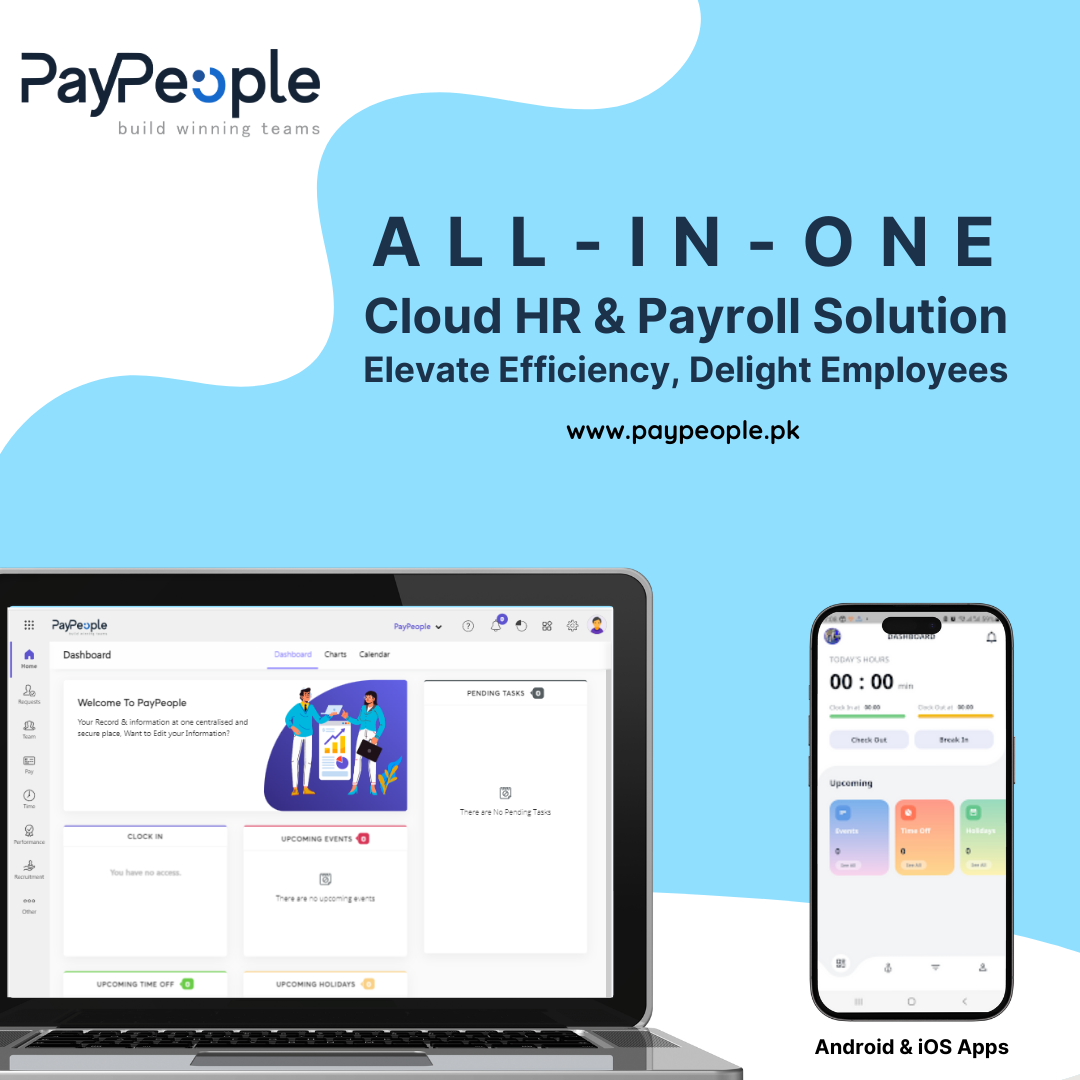The landscape of payroll is evolving rapidly, driven by technological innovation, shifting workforce expectations, and a global push toward more efficient and employee-centric HR solutions. Payroll software, once a static tool for processing paychecks, has transformed into a dynamic, integrated platform at the heart of modern business operations. As we look ahead, several trends are shaping the future of payroll systems—redefining how businesses manage compensation, compliance, and employee engagement.
PayPeople – The Best Payroll Software in Pakistan
1. Cloud-Based Payroll Solutions
The shift to cloud-based platforms is one of the most significant trends in payroll technology. Cloud payroll systems offer greater flexibility, allowing HR teams and employees to access information securely from anywhere. This is especially vital in the era of remote and hybrid work. Real-time updates, seamless integration with other HR tools, and automatic software updates ensure businesses remain compliant with evolving tax laws and labor regulations.
2. Artificial Intelligence and Automation
AI is transforming payroll by automating repetitive tasks such as data entry, tax calculations, and compliance monitoring. Machine learning algorithms can detect anomalies in payroll data, helping to prevent fraud and errors. Predictive analytics also empower HR teams with insights into labor costs, overtime trends, and employee retention, supporting better business decisions.
3. Integration with Broader HR Ecosystems
Modern payroll software increasingly integrates with broader human capital management (HCM) systems, linking payroll with recruitment, performance management, benefits administration, and time tracking. This creates a unified HR experience, reduces administrative overhead, and improves data accuracy across functions.
4. Global Payroll Capabilities
With more companies expanding internationally and hiring global talent, there is a growing demand for payroll systems that support multi-country payroll processing. The latest platforms offer localization features, currency conversion, and region-specific compliance tools, enabling businesses to manage international payroll efficiently and legally.
5. On-Demand Pay and Financial Wellness
The traditional bi-weekly or monthly pay cycle is being challenged by the rise of on-demand pay. Employees increasingly expect access to earned wages before payday, and many modern payroll systems are responding by offering this feature. Additionally, financial wellness tools, including savings plans, budgeting assistance, and debt management, are being integrated into payroll platforms to support employee well-being and retention.
6. Enhanced Data Security and Compliance
With payroll data being highly sensitive, cybersecurity is a top priority. Payroll providers are investing in advanced encryption, multi-factor authentication, and compliance with global data protection laws like GDPR. Real-time compliance updates ensure organizations can adapt quickly to legislative changes, reducing legal risks.
7. Self-Service Portals and Mobile Access
Employees expect user-friendly digital experiences, and payroll software is delivering with self-service portals and mobile apps. These tools allow staff to view payslips, update personal details, submit time-off requests, and access tax documents without involving HR—saving time and boosting satisfaction.
8. Sustainability and Paperless Payroll
As organizations pursue eco-friendly practices, digital payroll is becoming standard. Electronic payslips, direct deposits, and digital tax filings reduce environmental impact, cut operational costs, and enhance recordkeeping efficiency.
Conclusion
The future of payroll is smart, integrated, and employee-focused. As technology evolves, payroll software will become even more strategic—empowering HR leaders to create a seamless, compliant, and engaging experience for employees worldwide. Embracing these trends will be key for organizations aiming to stay competitive and responsive in an increasingly digital workplace.




